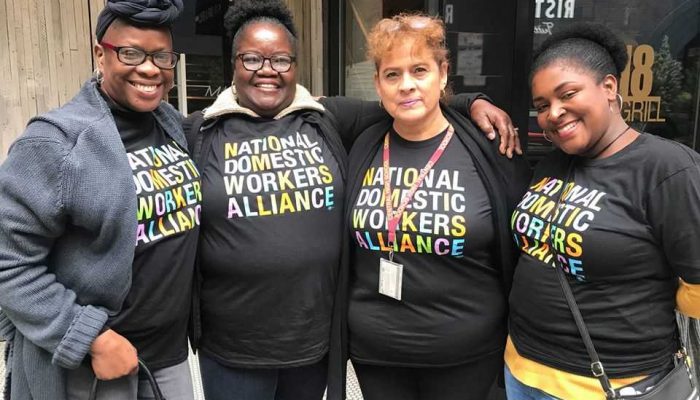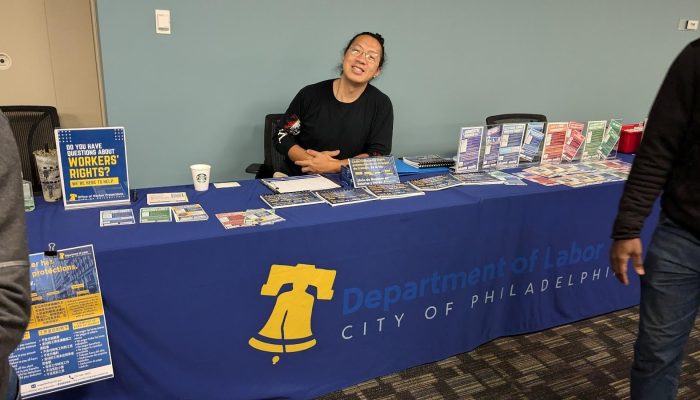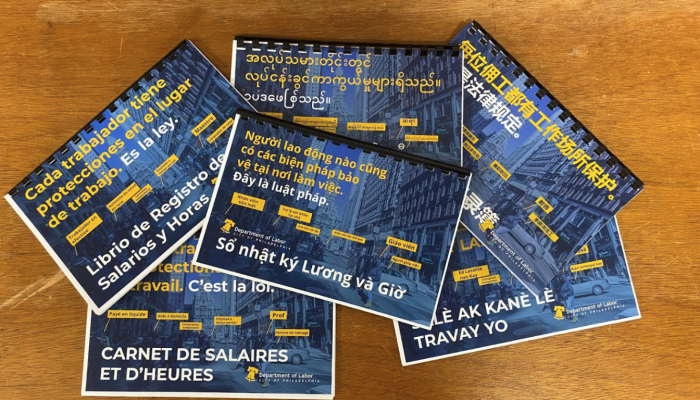When the full force of the COVID-19 pandemic hit, the state and federal governments created aid programs—like “stimulus checks” and expanded unemployment benefits—to help people make ends meet in challenging times. Unfortunately, most of these benefits had restrictions that prevented many Philadelphians who have the greatest need from accessing them. Many of those left out of this relief were essential workers on the frontlines of the pandemic, serving in positions such as domestic and care workers, farmworkers, home health aides, and food delivery workers.
We are proud to say that Philadelphia was one of the cities that stepped up to help fill this gap and provide critical cash assistance to workers who were excluded from other COVID relief programs. We partnered with the National Domestic Workers Alliance, local and national philanthropic partners, and 14 trusted community-based organizations to distribute $800 prepaid cards to 2,162 workers through the Philadelphia Worker Relief Fund.
A report was published to provide insight into the design and results of the Philadelphia Worker Relief Fund. Some of the key highlights are shared below.
Who received funds?
Funds were distributed through a network of 14 community-based organizations with deep relationships and strong community trust. With their help, we were able to quickly reach workers who had been excluded from state and federal aid. Nearly all of Worker Relief Fund recipients were people of color—around 95 percent. Fifty-eight percent of awardees were women, and more than two-thirds had three or more people in their household. We also reached low-income individuals, with 75 percent of recipients reporting a household income of less than $20,000 a year.
How did people spend funds?
We were able to receive de-identified transaction data to better understand how recipients spent the money they received. Overall, about 60 percent of all funds were withdrawn in cash, suggesting recipients had a preference or need to use cash for purchases. For the other 40 percent of funds, recipients spent the money directly from the prepaid debit card. For these transactions, we were able to see the categories of merchants where the transactions were made. By far the largest category was grocery stores and supermarkets, with about 38 percent of all funds spent there. The next largest categories were: discount, wholesale, and department stores (14 percent), clothing and shoe stores (9 percent), personal goods and pharmacies (8 percent), and restaurants, bakeries, and fast food (6 percent).
What’s next?
The Worker Relief Fund helped us to develop partnerships with community-based organizations that we will build on for future programs and for longer-term engagement on workers’ rights and other issues.
The Fund also showed us that, when given the flexibility to make their own decisions about how to spend cash relief, people are making decisions based on what the most urgent needs are for their families. Based on the success of the Worker Relief Fund, Mayor Kenney joined Mayors for a Guaranteed Income to advocate for cash assistance programs and to learn from a network of cities across the country that are invested—like we are—in identifying the most effective ways to deliver cash assistance.




